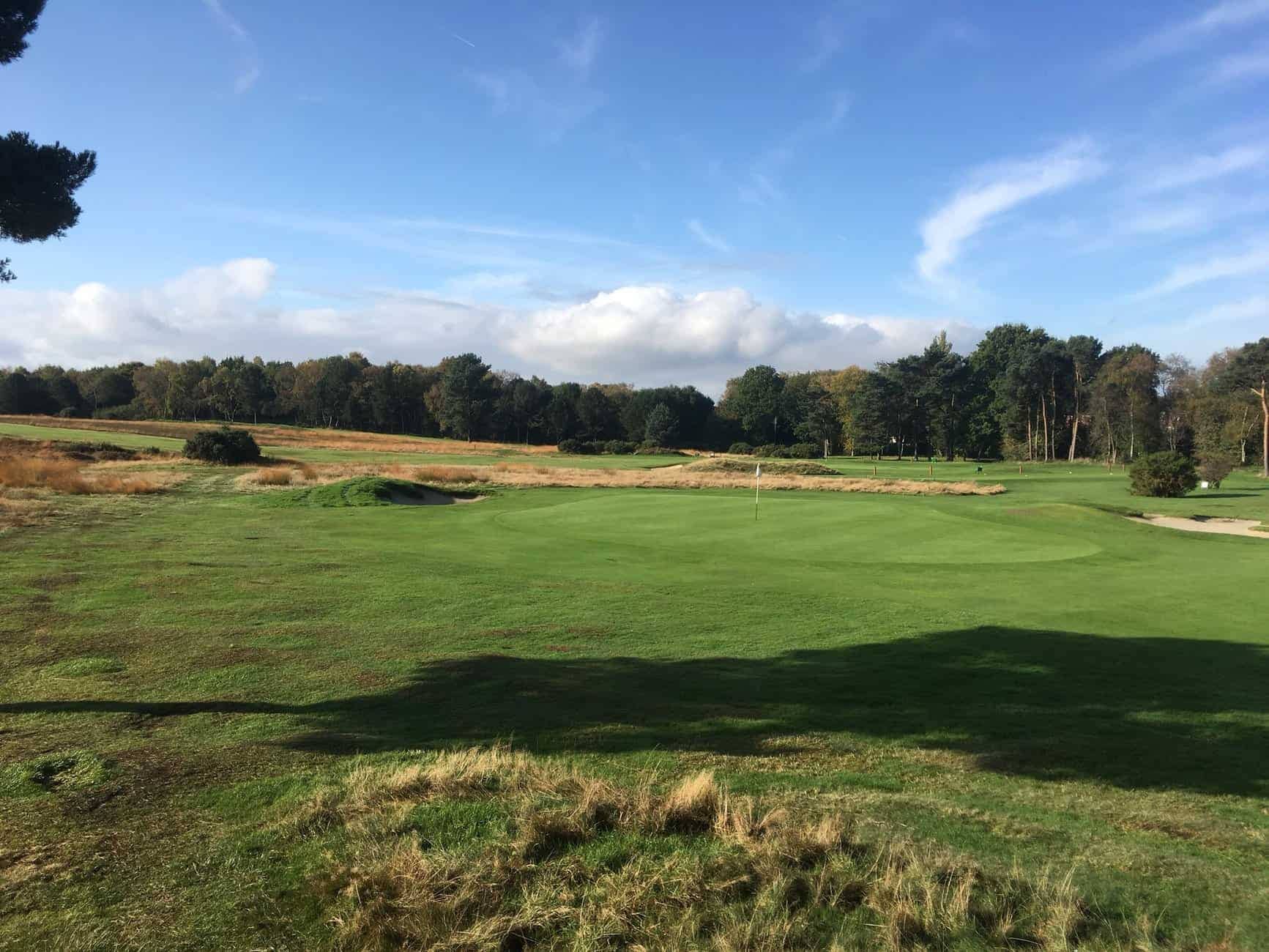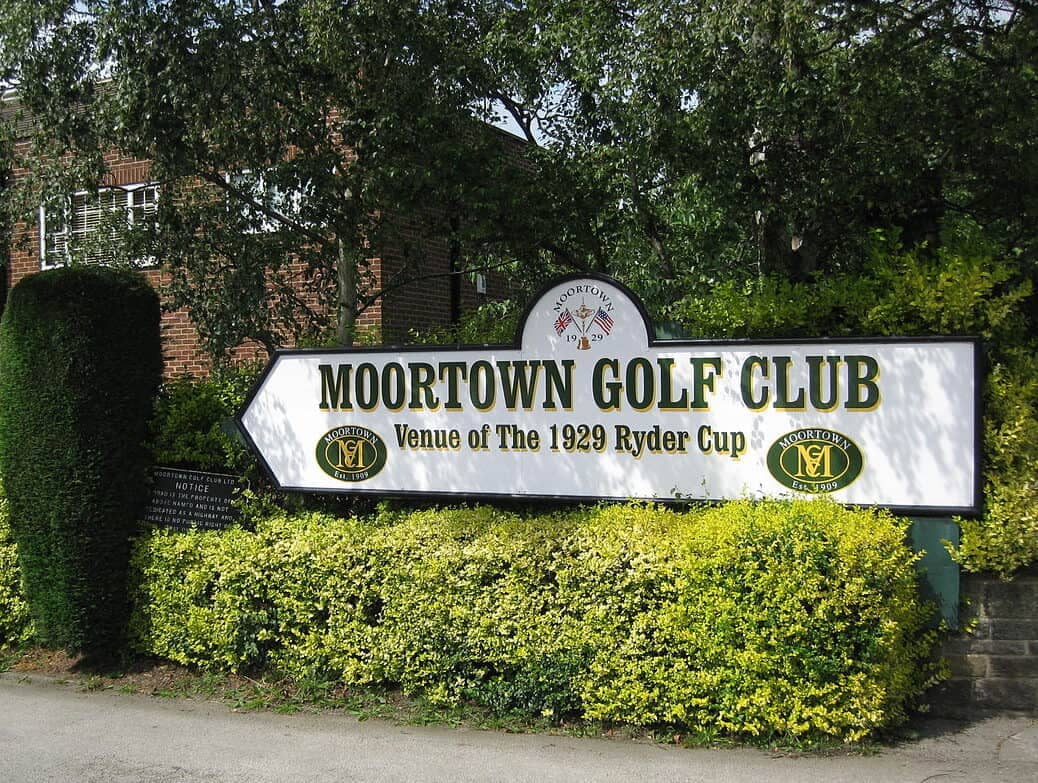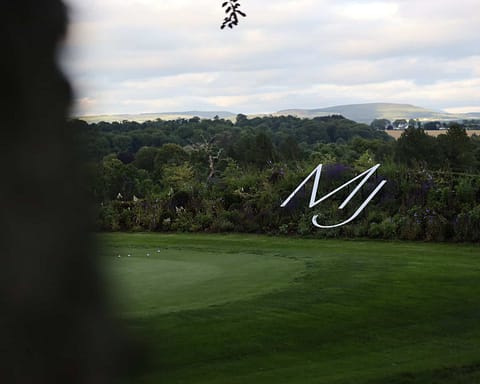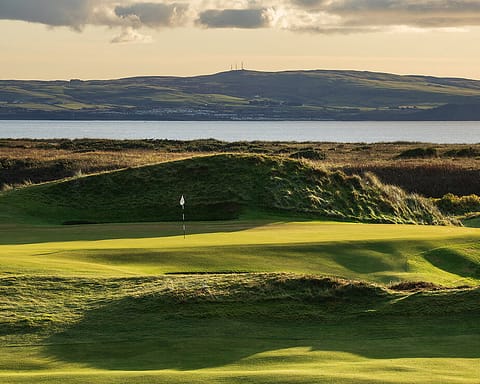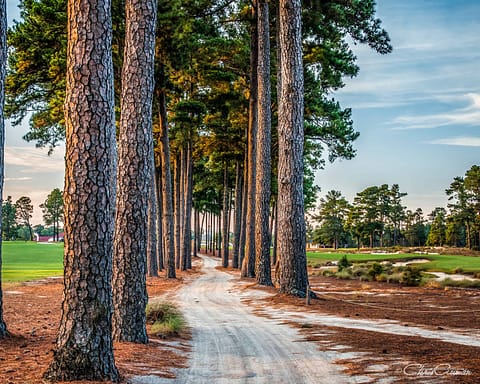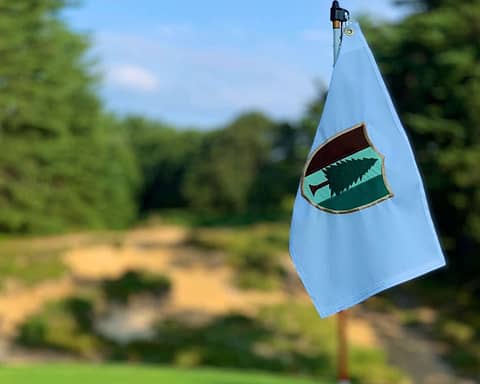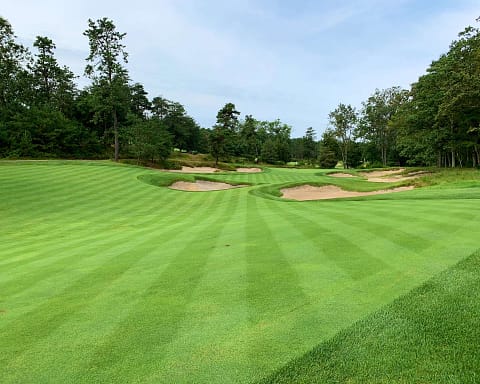During its celebrated history, Moortown Golf Club has grown accustomed to hosting the greats of the game and providing the backdrop for significant moments in golf history.
Everyone from Walter Hagen to Peter Thomson, Tom Watson, Seve Ballesteros and Nick Faldo have played here, each chapter helping to build the story of this wonderful golf club.
And yet, there can be no question when the defining moment came. Even before you turn left into Moortown’s tree-lined driveway you know.
MOORTOWN’S RYDER CUP LEGACY
The sign proudly reads ‘Moortown Golf Club – venue of the 1929 Ryder Cup.’ And why not? This Yorkshire club is, after all, where the very first Ryder Cup to be played outside the US took place but it was also where Great Britain won it for the very first time and a moment which secured Moortown’s place in the history of golf.
The beginnings of what would play out had begun three years earlier at Wentworth. Samuel Ryder, an entrepreneur who made his fortune selling packets of seeds, was in the bar having a drink or two and announced that he would give £5 to each of the winning players from the unofficial match between players from the US and Great Britain that had been arranged.
The winners would also be thrown a champagne party with chicken sandwiches – lucky things. That moment would prove to be the spark that lit the fire. In 1927 inaugural Ryder Cup was played in Worcester Country Club in Massachusetts. By then Ryder himself had donated the little golden trophy that has become so iconic in the sport – Europe and the US still play for it today. At Moortown Golf Club the reminders are rich and familiar. The club still has copied of the menu for the post-match dinner which took place at The Queens Hotel in Leeds.

HISTORY ALIVE AT MOORTOWN GOLF CLUB
At the bottom of the menu card the score is noted. However George Duncan, captain of the victorious British team and proud Scotsman, may not have been impressed to see it reads: ‘England won 7-5.’
Another treasured exhibit is a letter from the great Walter Hagen when he became the first overseas player to be invited to be an honorary member. It reads ‘to my fellow club members in remembrance of the wonderful time they gave the American Ryder Cup team when we lost to your gallant team at Moortown in April 1929.’ There is golfing history all around even before you set foot on the 1st tee. And it lives on.
At Moortown the women golfers still play for their own Ryder Cup. And not just in name. The trophy was donated by Samuel Ryder himself as a thank you gift to the local women who helped make the 1929 Ryder Cup such an enduring success story.

MOORTOWN IN THE SPOTLIGHT
Moortown was selected by the PGA to host the match only 20 years after its foundation. And it was given just four months to prepare for two-day event that would set records for both the number of people attending and gate receipts. Not long when you consider the PGA of American have just announced that Congressional Country Club will host the 2036 Ryder Cup. This was, however, not just any course. It has been designed by Dr Alister Mackenzie, the Yorkshireman who went on to design the fabled Augusta National, his final masterpiece, in 1933. He died a year later.
The first public reference to a Ryder Cup happening at Moortown came on Wednesday, December 12, 1928. Tucked away on the back page of the Yorkshire Post is a story with the headline ‘Ryder Cup match for Leeds.’ It begins, ‘a pleasant surprise has come to golfing enthusiasts in Leeds.”
The work began immediately. The course would be extended by some 300 yards, largely by pushing tees further back.

A BRILLIANT TEST OF GOLF
The course we play is not exactly the one Hagen et al played in 1929, but not much has changed. The opening hole is a relatively straightforward par-5. The original design saw a stream run across the fairway at around 300 yards but that stream was filled in for the Ryder Cup. The order of holes is different today with the 8th playing as the 6th in 1929 and the 17th, a par-3 today, a par-4 for the match. Today the course is still as wonderful as ever, with one excellent hole after another.
The natural heathland is given space to breathe, the bunkering is excellent and in the 10th – Gibraltar – Moortown boasts a par-3 that sits on a rocky plateau peppered with bunkers, that would not look out of place at The Masters. It was the hole MacKenzie built first at Moortown. It is also the one that lives longest in the memory.
The Americans set sail from New York on April 10, 1929 in order to have 10 days to practice in British conditions. They arrived in Plymouth six days later aboard RMS Mauretania with Hagen immediately granting the British press an interview. He conducted it still in his cabin, while shaving and dressed in his pyjamas. Asked about the American uniforms, Hagen said: “we got the finest dark blue knicker suits that you ever saw and we will wear these at Moortown if the weather is fine.” It would be far from fine, but more on that later. Hagen added: “We shall have a tough time before we can win the Ryder Cup again, I’m sure of that. You have got a good team that will make us go.” Hagen and his teammates then headed to London to meet their opponents over an opulent lunch at the luxurious Savoy Hotel.
STEEL OUTLAWED AT MOORTOWN
The British team headed north to Harrogate and based themselves at Majestic Hotel, practising at Harrogate Golf Club. The Americans, however, would go south to the Kent coast to play Royal St George’s, where Hagen had won The Open Championship the year before. On the first day of practice, the Americans received word that they would not be permitted to play with steel shafts. Steel had been approved for play by the USGA but the R&A would take another year to agree to their introduction. It was a setback for the Americans, although Fred Whiting, the pro at St George’s, was suddenly recruited to provide new hickory-shafted golf clubs to the entire US team.
On the week of the Ryder Cup itself, both teams practiced at Moortown separately. By the Wednesday, the Yorkshire winter came back in force. While the British team returned to Harrogate to use the baths, the Americans stayed to brave the conditions and to, according to one unnamed player, ‘become acclimatised to your cold English weather.’ It was to be a rude awakening. By mid-afternoon the course would be under an inch-thick blanket of snow. Observers at the time suggest that the Americans continued despite the snow, wearing “two pullovers, mackintosh jackets and mittens.
MOORTOWN A STUNNING INLAND TEST
It is all in sharp contrast to our round at Moortown back in the present day. The weather is mild, the ground firm and the breeze strong enough to cause problems. But the course is in excellent condition from tee to green. It’s a magnificent layout, with a string of excellent long par4s and a series of holes at the start of the back nine that run along the moorland. The course is constantly being improved. After studying aerial photos taken by the RAF in the 1920s, the club restored many of the original MacKenzie bunkers that had been covered up by grass in the years since. It’s a real and very memorable treat.
There are no caddies at Moortown these days but there is one story worth revisiting from the days of the Ryder Cup. Ernest Hargreaves was a 16-year-old local boy who had grown accustomed to caddying for members of Moortown. On the Monday before the Ryder Cup, Ernest waited patiently for Hagen’s taxi to arrive. When it did, he was there to offer his services as a caddy for the match. Hagen agreed.
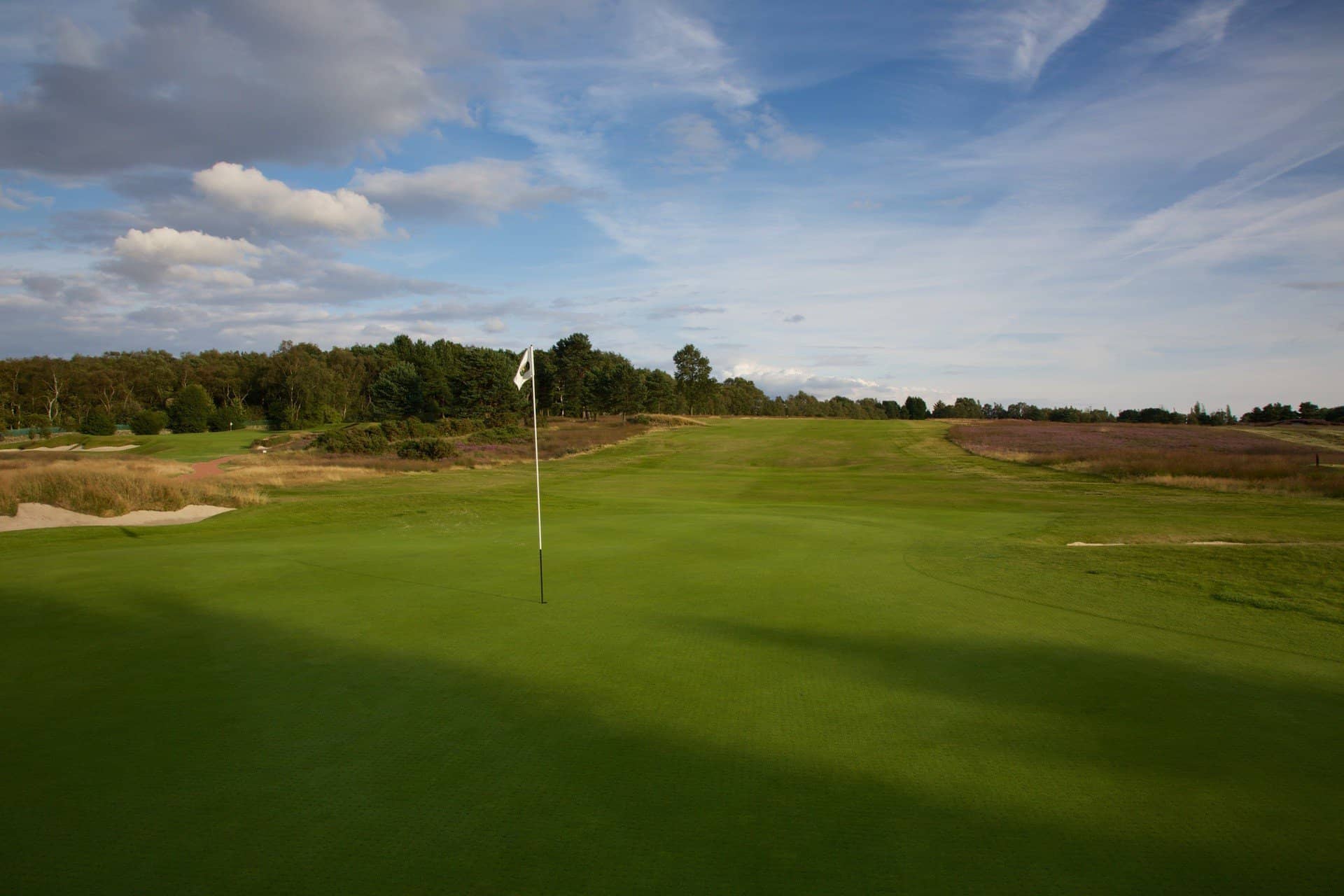
And despite the Americans falling to a famous defeat, Hagen asked Ernest to caddie him as he attempted to defend the Claret Jug at Muirfield. Which they duly did together. Although Ernest and Hagen would eventually part ways, the youngster went on to become Henry Cotton’s caddie and have a career in the game and all because he had the courage and foresight to approach Hagen in the car park.
A CLUB ASSURED OF ITS PLACE IN HISTORY
While we are on the subject of Cotton, there is a story worth ending on. The 22-year-old Englishman was star rookie of the British team in 1929. He would win his singles 4&3 over Al Watrous and, of course, go on to win The Open Championship three times during a stellar career. It was at Moortown he met Hagen.
Cotton picks up the story. “Walter was making big money and spending most of it while living life to the full. One day I said to him, ‘I would love to have one of your clubs.’ ‘What club would you like?’ he answered. I had fancied a number eight of today from his bag marked, then, a ‘mashie niblick’. He said, ‘Come and pick it up some time,’ and so whilst in Paris I went to Claridges in the Champs-Élysées where he was staying, telephoned his room, and was invited to ‘Come on up, Kiddo.’ He had a suite of connecting rooms, something like 407 to 415, so I went to 407, knocked on the door and when there was no answer to my ‘Hello?’ I pushed open the door. Inside was a girl wearing a negligee. ‘Mr Hagen?’ I enquired.
“She appeared not to know who he was but indicated that I should go to the next room. To my great embarrassment I then went through a whole series of rooms, one after the other, all full of half-dressed young ladies. I eventually found Walter lying on his bed with the telephone still in his hand – he hadn’t put it down after speaking to me and he was fast asleep. I didn’t know what to do, but there were a whole lot of clubs in one corner and obviously he had sorted some out. I didn’t want to wake him, so I helped myself to an eight-iron, left a goodbye and thank you note and went quietly away.”
It was a different time. A more interesting time, perhaps, but although much has changed over the intervening 90 years, Moortown remains as magnificent as ever, a club assured of its place in history.
MOORTOWN GOLF CLUB: KEY FACTS
Phone number: 0113 268 6521
Designed by: Dr Alister Mackenzie
Length: Par 71, 6980 yards
Website: moortown-gc.co.uk

